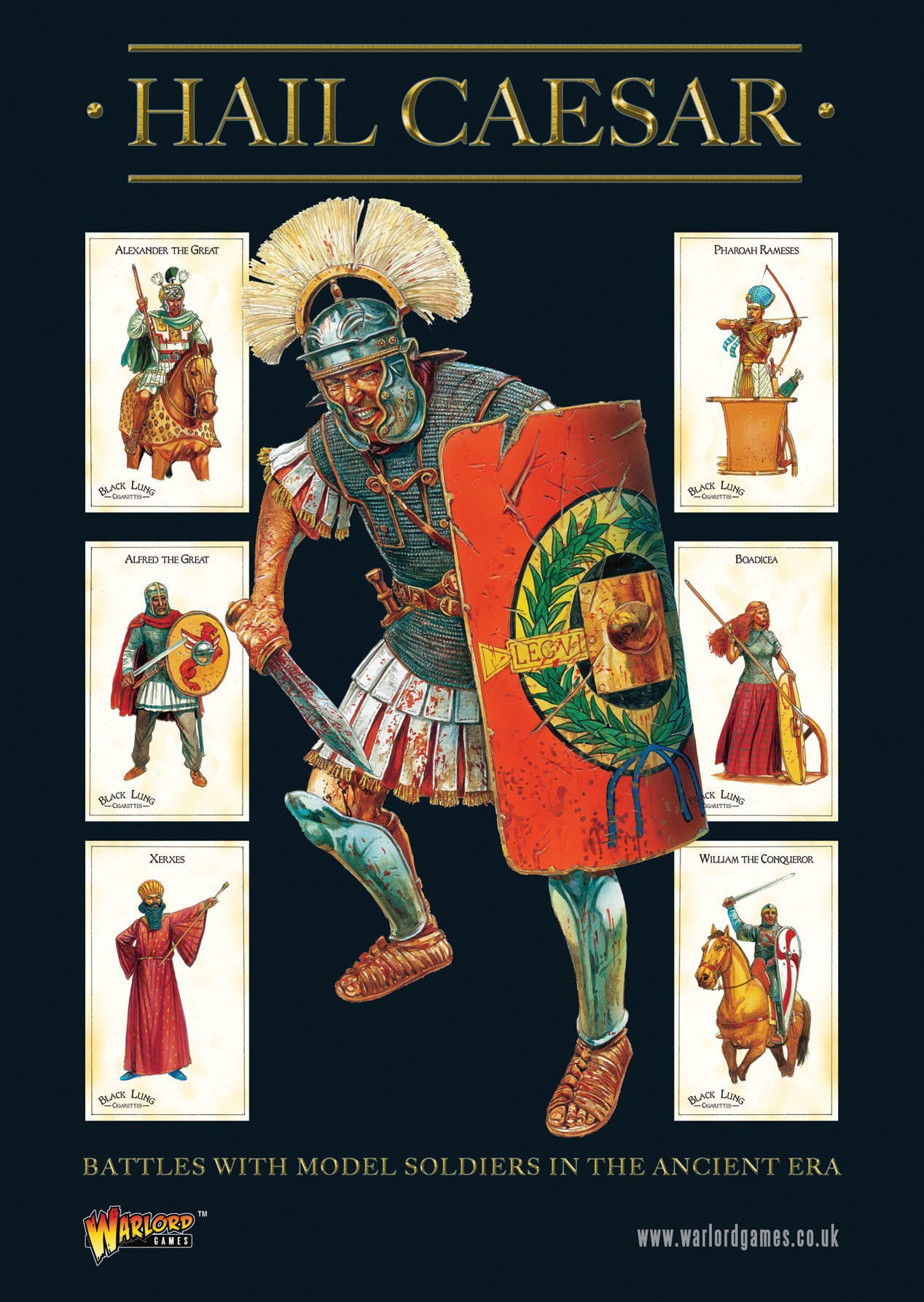 A friend of mine hosted a game of Hail Caesar! the other night. He's really into Greek and Persian ancient history, and we recreated the Battle of Cunaxa. The war ended when my general, representing Cyrus the Younger was crushed by an elephant, bringing the rebellion to an end.
A friend of mine hosted a game of Hail Caesar! the other night. He's really into Greek and Persian ancient history, and we recreated the Battle of Cunaxa. The war ended when my general, representing Cyrus the Younger was crushed by an elephant, bringing the rebellion to an end. I've been wanting to play Hail Caesar! for several years, but never really got around to it. Hail Caesar! and its sister games, Pike and Shotte and Black Powdershare most of their core mechanics, and have several interesting features.
All three games are descended from the old Warmaster system, which was a 10mm fantasy system for the Warhammer world. It was never really all that popular with GW players, and languished in Specialist Games purgatory before dying the final death. There was also a Historical offshoot. Rick Priestly seems to have kept on adapting it for personal games, in 28mm, and he and his cadre eventually released the results as this current range of games. Or that's as best as I can gather.
Some thoughts:
- Hail Caesar! is largely a game of general management. Your force has one or more general models, each of whom command a division of your army. They have a leadership rating of 5 to 10. To issue a movement order to any of your units, the you must roll against the relevant general's leadership. If you succeed, they can move once, twice, or even three times, depending on how well you roll. If you fail, then the unit just sits there. Units can only take very simple and obvious moves without a general ordering them. So much of the strategy of the game lies in deciding what are your top priorities each turn, and in what sequence to issue your orders. In play I found this actually pretty interesting.
- The combat mechanics are relatively simple. In shooting or melee, you roll a bunch of dice determined by the relevant characteristics: clash melee, extended melee, long range shooting, and short range shooting. Clash melee is for the turn you charge or are charged. Extended melee is for any subsequent turns. So some troops are better when they charge, and others are better in drawn-out conflicts. Long range shooting is pretty self-exploratory. The short ranged value is also used when a unit supports its friends to either side or in front of it in a battle line. All units have a morale save, and a kind of hit points, of which bigger, tougher units have more. Between the basic mechanics and a few special rules, there seems to be a reasonable amount of depth to the combat system. (One problem with Warmaster was that all fights quickly started to seem the same...)
- As units take wounds, they can suffer from three different kinds of woe. They can be shaken, having so much attrition that they fight ineffectively. With enough hits, they can be destroyed outright. And sometimes, they can be disordered, a temporary condition from which they recover on the next turn. There is also a chart, on which a losing unit must roll. This provides extra effects such as being forced to withdraw. I don't normally like charts, but this one seems a necessary part of the overall game flavor, forcing units to react in different ways to damage.
- Hail Caesar! is a game of units, not models. Each unit has statistics. When it takes damage, you do not need to remove dead models. Just mark it with tokens or a die. Bigger units have better statistics, more attacks, and more hit points. The depth of a unit does not much matter, only its frontage. I love, love, love this aspect of Hail Caesar! (In other games, like WFB, I hate having to count out the right number of models, fit them onto a tray, take them off again, and so forth.)
So anyway, it was good to finally play the game. I'll be interested to see how much depth it has on repeated games, but I think it looks fun.









No comments :
Post a Comment